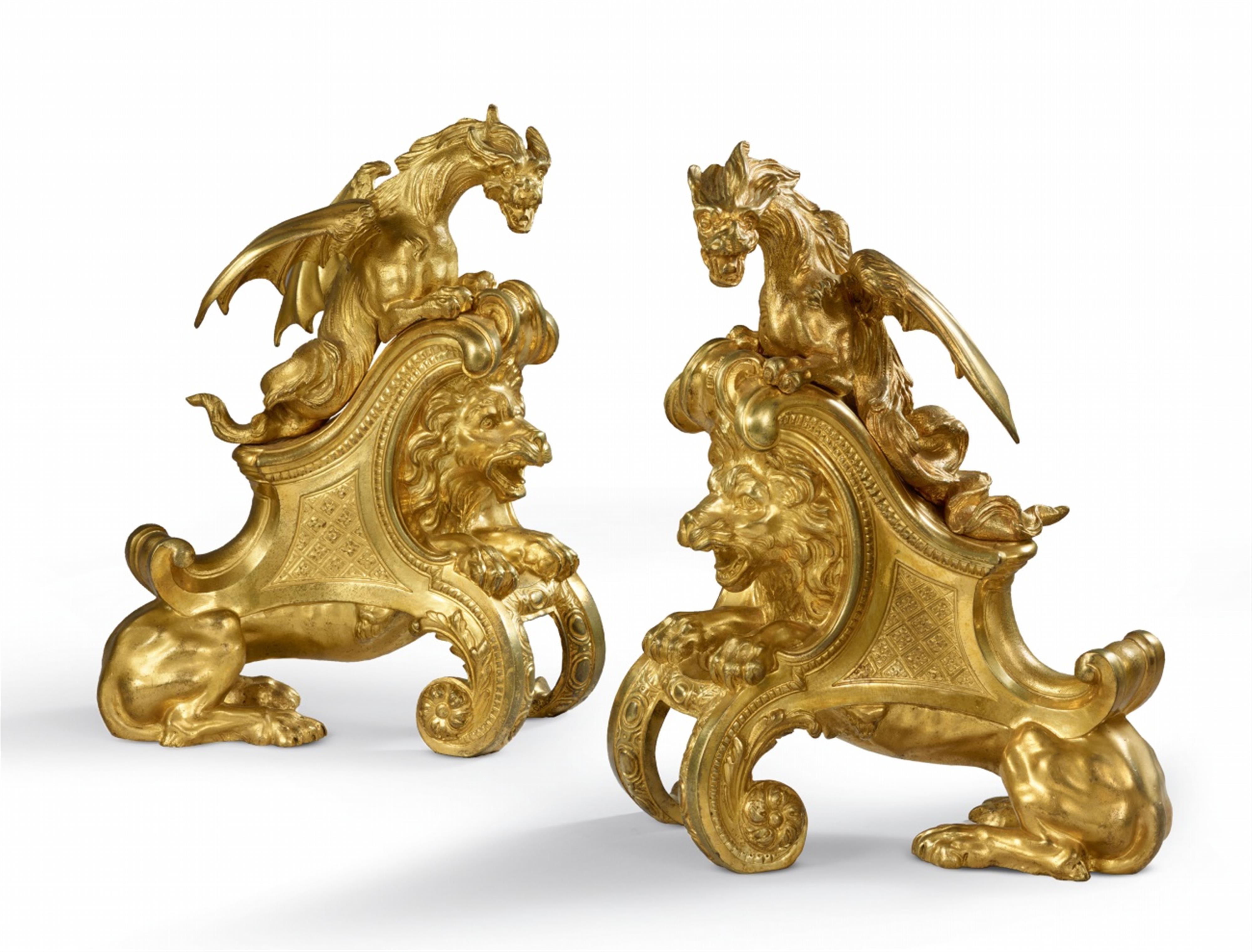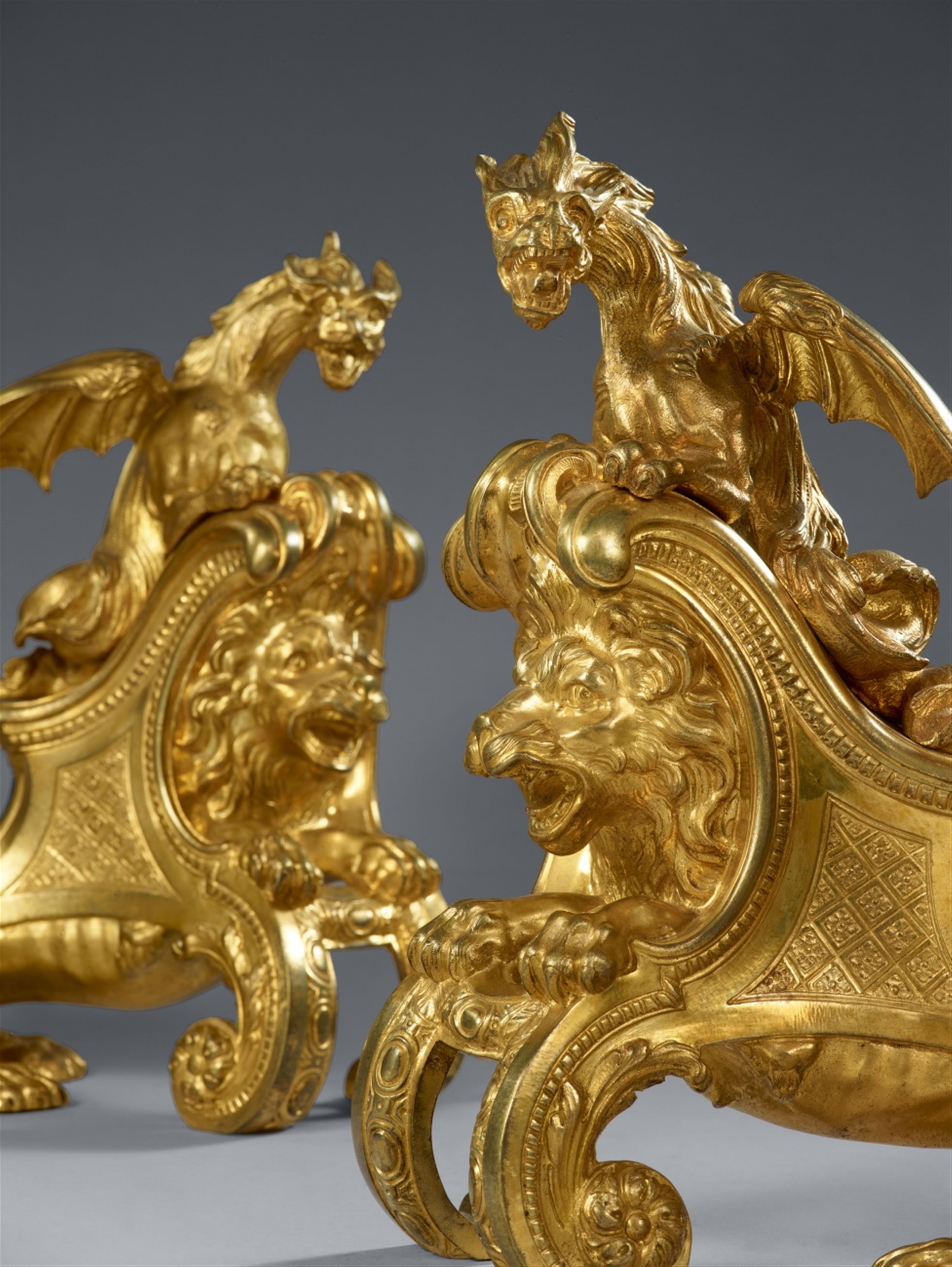A pair of ormolu fire dogs with lions and dragons
Finely chased bronze models cast with integral slanted plinths. The backs hollow. H 37, W 31.5 and H 36.5, W 30 cm.
Paris, attributed to Charles Cressent, circa 1725 – 35.
Andirons or fire dogs, French "chenets", were used to hold the wood in the fireplace and to create a barrier that made it less dangerous to be near the fire. The floor length gowns worn by ladies always presented a fire hazard. André Charles Boulle was the first designer to design and publish "Grilles pour Cheminées" with ormolu decorations on the side facing the room, consisting of urns or figures holding vases, but which were open on the side facing the fireplace in order to save material. They were mounted with iron bars that reached into the fire and limited the space in which it could burn.
Charles Cressent (1685 - 1768) came from a family of artists and craftsmen. His father was François Cressent, sculpteur du roi. Charles Cressent was also trained as a sculptor and ebeniste, his teacher was the famous cabinetmaker and bronze caster André Charles Boulle, who ran a workshop under the Grande Gallerie of the Louvre. Even during his lifetime, his furniture and bronzes far exceeded their utilitarian function; they were purchased as representative works of art. Boulle was a great role model for Charles Cressent, and like him he also had his bronzes cast and finished in his own workshop, which repeatedly led to disputes and even lawsuits with the metalworking guilds of fondeurs-ciseleurs (casters and chasers) and ciseleurs-doreurs (chasers and gilders).
In addition to furniture pieces decorated with impressive, often sculptural, bronze mountings, one of Cressent's first major commissions was a bronze bust of Louis d'Orléans, Duke of Chartres and son of Duke Philippe d'Orléans. He also built the famous pair of medal cabinets today housed in the Bibliothèque Nationale for the same patron. Cressent's creations in bronze are extraordinary in every respect and in both design and execution are among the finest that could be acquired during the period, a fact to which this pair of fire dogs testifies.
For financial reasons, Cressent held an auction of his stock and collections in 1750, for which he himself wrote the catalogue. This turned out to be a successful publicity stunt, as it put Cressent back in the public eye and brought him many new orders. He organised another auction of his stock in 1756 before ceasing activity as a craftsman. He then devoted himself to building up his collections until his death in 1768.
Literature
Cf. Pradère, Charles Cressent sculpteur, ébéniste du Régent, Dijon 2003, no. 276, a further identical pair of fire dogs formerly belonging to the d'Ennery collection, auctioned in 1786. Cf. The base of a fire dog with the dragon and the Bavarian electoral coat-of-arms also produced in Paris in around 1720 (in Ottomeyer/Pröschel, Vergoldete Bronzen, vol. I, Munich 1986, illus. 1.10.16).




